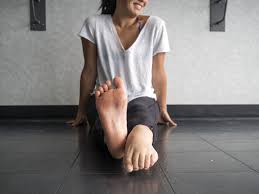Walking Barefoot Using Correct Foot Placement
In order to walk barefoot correctly, one must be aware of the foot's inherent biomechanics and take care to maintain good alignment and posture with every stride. Here's how to arrange your feet correctly when walking barefoot:
1. Start with Proper Posture: Maintain a straight posture with your head in line with your spine and your shoulders back. To support your back and keep proper posture when you walk, contract your core muscles.

2. Land Midfoot: Instead of landing on your heel or toes when taking a step, try to contact the middle of your foot. This lessens stress in particular places of the foot and helps disperse impact forces more equally throughout.

3. Allow for Natural Pronation: As your foot adjusts to the shock of each stride, let it naturally pronate, or roll slightly inward. Pronation facilitates force distribution and enables the foot to adjust to uneven terrain. But overpronation, or excessive pronation, should be avoided as it might result in biomechanical problems.
4. Maintain Neutral Alignment: With every step, make sure your spine, hip, knee, ankle, and foot are all in the right alignment. Focus on maintaining a neutral foot and lower leg position to prevent excessive ankle rolling, also known as overpronation or supination.
5. Engage Foot Muscles: As you walk, pay attention to and consciously use the muscles in your feet. In addition to strengthening the muscles, this also enhances balance and stability.

6. Take Short, Controlled Steps: Refrain from overstriding or taking excessively long steps, as this can result in inefficient mobility and heightened joint and muscle strain. Rather, go at a moderate speed and take little, deliberate steps.
7. Be Mindful of Surface: Pay attention to the ground you're walking on, particularly if it's uneven or rocky. To keep yourself stable and prevent injuries, modify your stride and where you place your feet.
8. Listen to Your Body: When you walk barefoot, pay attention to any pain or discomfort in your ankles, knees, hips, or feet. If you feel uncomfortable, change your method or think about stopping to relax.
9. Gradually Increase Duration: If you're new to walking barefoot or are transitioning from supportive shoes, begin slowly and gradually increase the duration and intensity of your barefoot walks. This helps your feet to gradually adjust, lowering the chance of overuse injuries.
By following these principles and being careful of your foot placement and posture, you can reap the benefits of walking barefoot while reducing the risk of injury and promoting appropriate biomechanics.
